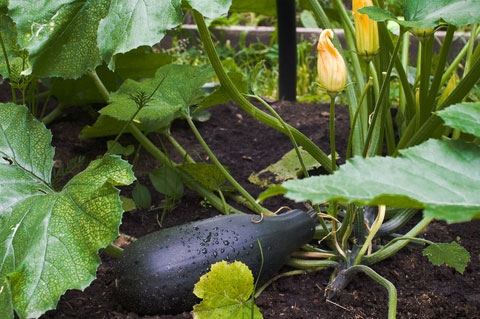Gardens
Crop Rotation | Prevent Pests and Diseases
Crop rotation may sound complicated, but this age-old practice is such a useful method for thwarting pest and disease problems that it’s worth gaining a basic understanding of why crop rotation is important and how to try it in your garden. In The American Gardener’s Assistant (1869), Thomas Bridgeman offers this reason for crop rotation: […]

Coffee By Design | Portland, Maine
Photo Credit : Katherine Keenan Crop rotation may sound complicated,
but this age-old practice is such a useful
method for thwarting pest and disease
problems that it’s worth gaining a basic
understanding of why crop rotation is
important and how to try it in your garden.
In The American Gardener’s Assistant
(1869), Thomas Bridgeman offers
this reason for crop rotation: “The soil in
which some particular vegetables have
grown, and into which they have discharged
the excretions of their roots, is
rendered noxious to the prosperity of
plants of the same or allied species,
though it be well adapted to the growth
… of other distinct species of vegetables.”
We now know that the “noxious excretions”
described are actually diseases and
pests, such as clubroot and carrot weevils,
that specifically target crops in a particular
family of plants.
In its simplest form, crop rotation is a
matter of growing a different crop (one
from another plant family) in a garden
bed from one season to the next. Here are
a few guidelines from The American Gardener’s
Assistant that form the basis of a
simplified rotation system.
Crop rotation may sound complicated,
but this age-old practice is such a useful
method for thwarting pest and disease
problems that it’s worth gaining a basic
understanding of why crop rotation is
important and how to try it in your garden.
In The American Gardener’s Assistant
(1869), Thomas Bridgeman offers
this reason for crop rotation: “The soil in
which some particular vegetables have
grown, and into which they have discharged
the excretions of their roots, is
rendered noxious to the prosperity of
plants of the same or allied species,
though it be well adapted to the growth
… of other distinct species of vegetables.”
We now know that the “noxious excretions”
described are actually diseases and
pests, such as clubroot and carrot weevils,
that specifically target crops in a particular
family of plants.
In its simplest form, crop rotation is a
matter of growing a different crop (one
from another plant family) in a garden
bed from one season to the next. Here are
a few guidelines from The American Gardener’s
Assistant that form the basis of a
simplified rotation system.
Alternate crops between fibrous and fat.
“Fibrous-rooted plants may be alternated with tap or tuberous-rooted, and vice versa.” For example, follow lettuce, leafy greens, beans, or peas with turnips, carrots, or beets.Follow lush leaves with skimpy tops.
“Plants which produce luxuriant tops, so as to shade the land, should be succeeded by such as yield small tops or narrow leaves.”You can follow this rule by planting carrots, parsley, onions, or garlic where tomatoes or peppers grew the previous year.Weed crops one year, not the next.
“Those which, during their growth, require the operation of stirring the earth, should precede such as do not require cultivation.” Follow sweet corn with cucumbers, melons, or squash.Excerpt from 1,001 Old-Time Household Hints—brought to you by Skyhorse Publishing




